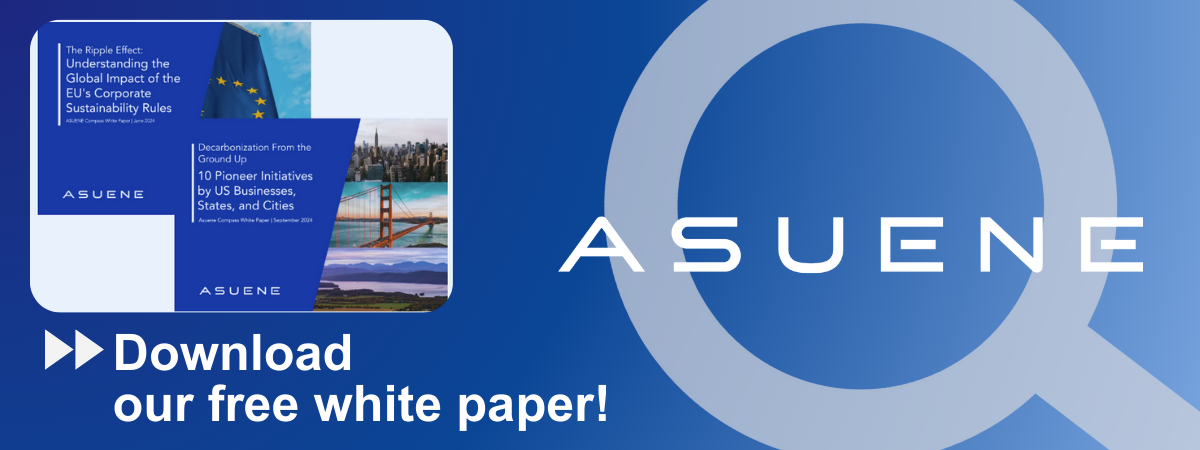- Article Summary
-
Overview
The real estate sector accounts for nearly 40% of global carbon emissions, making it a central focus of climate policy and ESG transformation. According to Atrius (2025), approximately 28% of these emissions result from operational energy use, while 11% stem from construction materials and processes: highlighting the need for both operational efficiency and embodied carbon reduction. With increasing pressure from investors, regulators, and tenants, the built environment is undergoing a rapid shift toward low-carbon and resilient design. From regulatory changes in the EU and U.S. to advancements in building materials and operational efficiency, real estate developers and owners must now prioritize sustainability as a core business strategy. This article explores how the sector is aligning with ESG imperatives through decarbonization efforts.
Policy and Regulatory Momentum
Real estate companies are now subject to a growing number of ESG regulations aimed at reducing emissions, improving transparency, and increasing climate resilience. From the EU’s zero-emission building mandates to U.S. local laws enforcing emissions caps, the regulatory landscape is evolving quickly. Below is a summary of key policies real estate stakeholders must understand:
Table: Key ESG Policies Impacting Real Estate
| Regulation | Region | Applicability | Start Year | Key Requirement |
|---|---|---|---|---|
| Energy Performance of Buildings Directive (EPBD) | EU | New and existing buildings | 2025 | Zero-emission buildings by 2030; renovation wave |
| EU Taxonomy | EU | All real estate investments | 2025 | Must meet climate mitigation/adaptation criteria |
| Corporate Sustainability Reporting Directive (CSRD) | EU | Large corporations, including real estate firms | 2025 | Expanded ESG reporting obligations |
| Corporate Sustainability Due Diligence Directive (CSDDD) | EU | Companies with large supply chains | 2025 | Mitigate environmental & human rights impacts |
| RE2025 (France) | France | New constructions in France | 2025 | Limits on embodied carbon; incentivizes timber use |
| SEC Climate Disclosure Rules | U.S. | Public companies incl. REITs | 2025 | Scope 1–3 emissions & climate risk disclosures |
| Local Law 97 (NYC) | U.S. – NYC | Buildings >25,000 sq ft | 2024 | Annual emissions caps & penalties |
| CALGreen (California) | U.S. – CA | New residential and commercial buildings | 2025 | All-electric design & on-site renewables |
| Inflation Reduction Act (IRA) | U.S. | Buildings undergoing energy retrofits | 2023 | Tax incentives for solar, EVs, efficiency upgrades |
Technological Innovations and Building Materials
The decarbonization of real estate is heavily dependent on innovation. Low-carbon concrete, mass timber, and recycled steel are increasingly replacing traditional high-emission materials. Smart building systems are being deployed to optimize energy use through real-time data on HVAC, lighting, and occupancy.
Heat pumps, rooftop solar, and battery storage are becoming standard in new developments. Retrofitting older buildings with these technologies is a growing market, supported by EU renovation grants and U.S. Inflation Reduction Act incentives. Digital twins—virtual replicas of physical buildings—enable predictive maintenance and energy modeling, further enhancing operational efficiency.
Financial Instruments and Investor Pressure
Sustainable finance is accelerating the shift. Green bonds issued by real estate companies surpassed $100 billion globally in 2024, and ESG-linked loans are now tied to sustainability performance targets like energy intensity and emissions reductions.
Institutional investors are embedding climate risk into their portfolio strategies, with organizations like the Net-Zero Asset Owner Alliance demanding credible net-zero transition plans. Asset managers now often require GRESB (Global Real Estate Sustainability Benchmark) ratings or adherence to Science Based Targets for Buildings before investment.

Case Studies: Leaders in Decarbonization
Several pioneering projects around the world are demonstrating that ambitious decarbonization is both feasible and economically advantageous.
In the Netherlands, EDGE Technologies is redefining office development with buildings that are energy-positive, meaning they generate more energy than they consume. These projects utilize AI-driven design software to optimize natural lighting, ventilation, and thermal performance. EDGE’s headquarters in Amsterdam has become a global benchmark for smart, sustainable architecture.
In the United States, Hudson Yards in New York City exemplifies large-scale urban sustainability. The development includes LEED Platinum-certified buildings, a district-wide energy system that recycles waste heat, and smart sensors to reduce energy usage across public and private spaces. Hudson Yards also features extensive green roofs and stormwater collection systems to enhance climate resilience.
France’s RE2025-compliant mid-rise developments in cities like Lyon and Bordeaux showcase how regulation can drive material innovation. These buildings often use engineered timber for structural components, significantly lowering embodied carbon. Projects are designed to be modular and adaptable, supporting both current ESG targets and future retrofitting needs.
These examples illustrate that forward-thinking design and policy alignment can lead to high-performing assets that attract premium tenants, deliver operational savings, and set new benchmarks for ESG performance.
Conclusion
Decarbonizing the built environment is no longer optional; it is an imperative driven by regulation, investor expectations, and societal demand. The convergence of policy, technology, and finance is creating a powerful ecosystem for ESG-driven transformation in real estate. Companies that lead this shift will not only reduce climate risk but also unlock long-term value, resilience, and competitive advantage in a low-carbon economy.
Why Work with ASUENE Inc.?
Asuene is a key player in carbon accounting, offering a comprehensive platform that measures, reduces, and reports emissions, including Scope 1-3, with expertise in decarbonization. Asuene serves over 10,000 clients worldwide, providing an all-in-one solution that integrates GHG accounting, ESG supply chain management, a Carbon Credit exchange platform, and third-party verification.
ASUENE supports companies in achieving net-zero goals through advanced technology, consulting services, and an extensive network.


